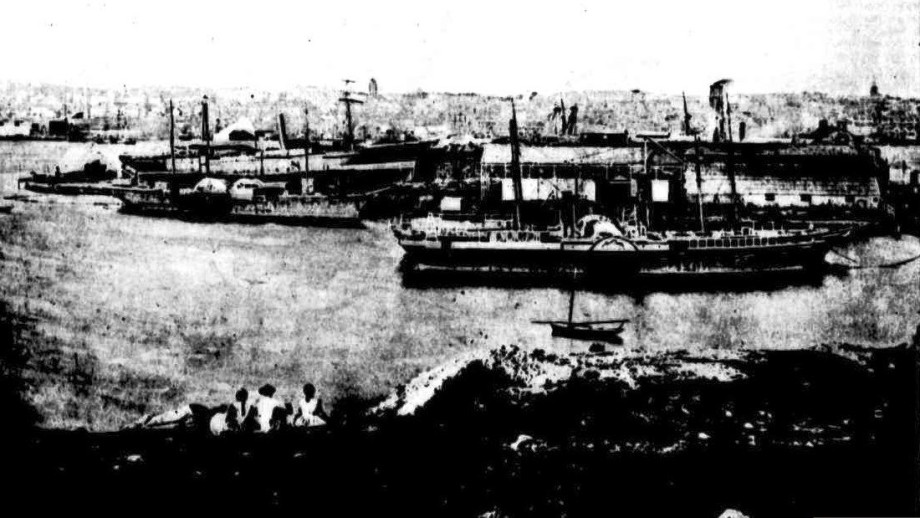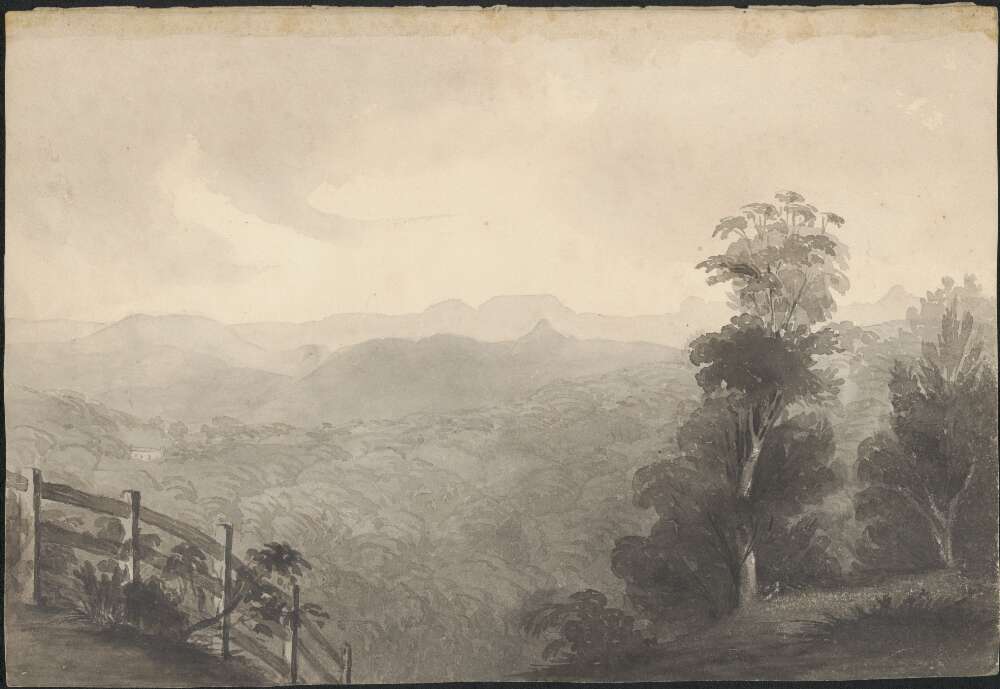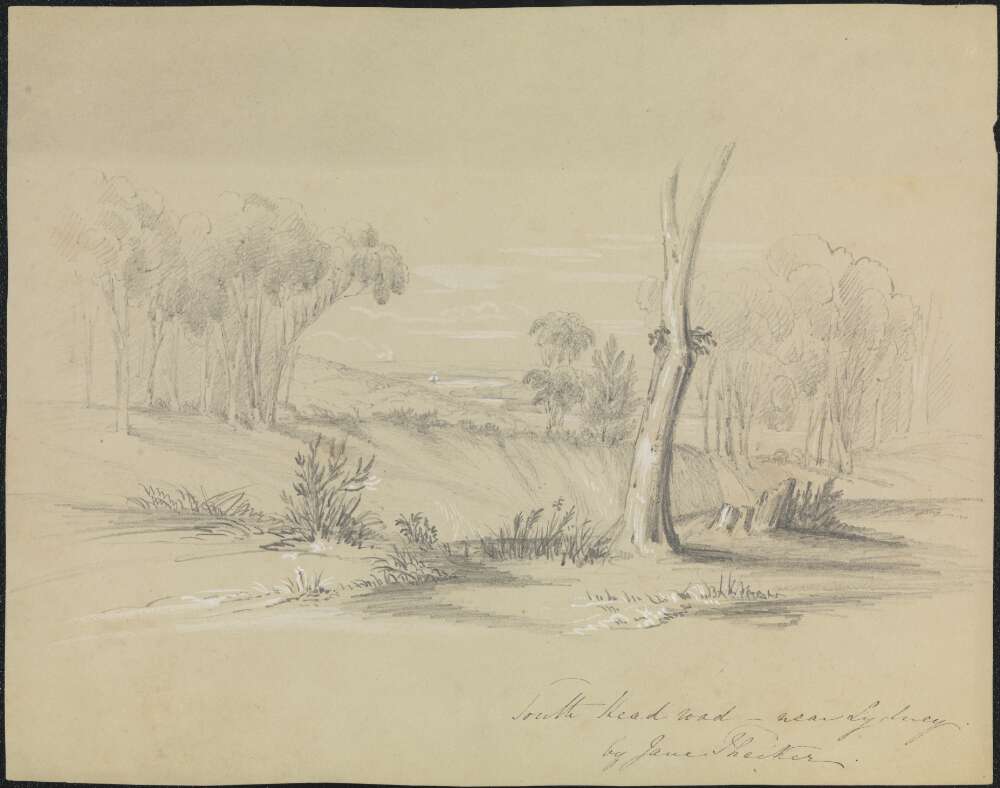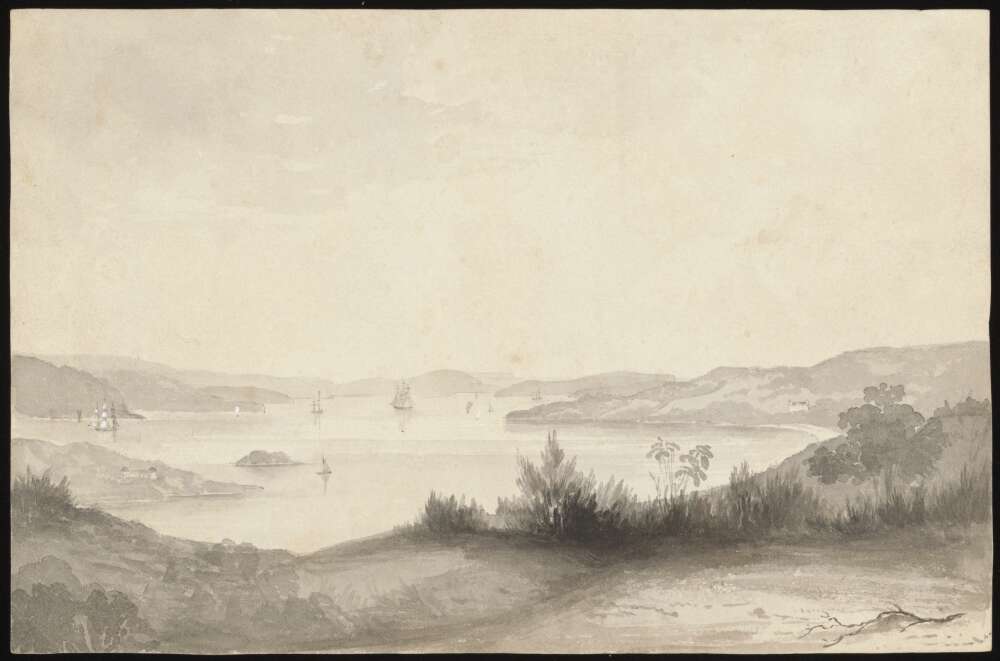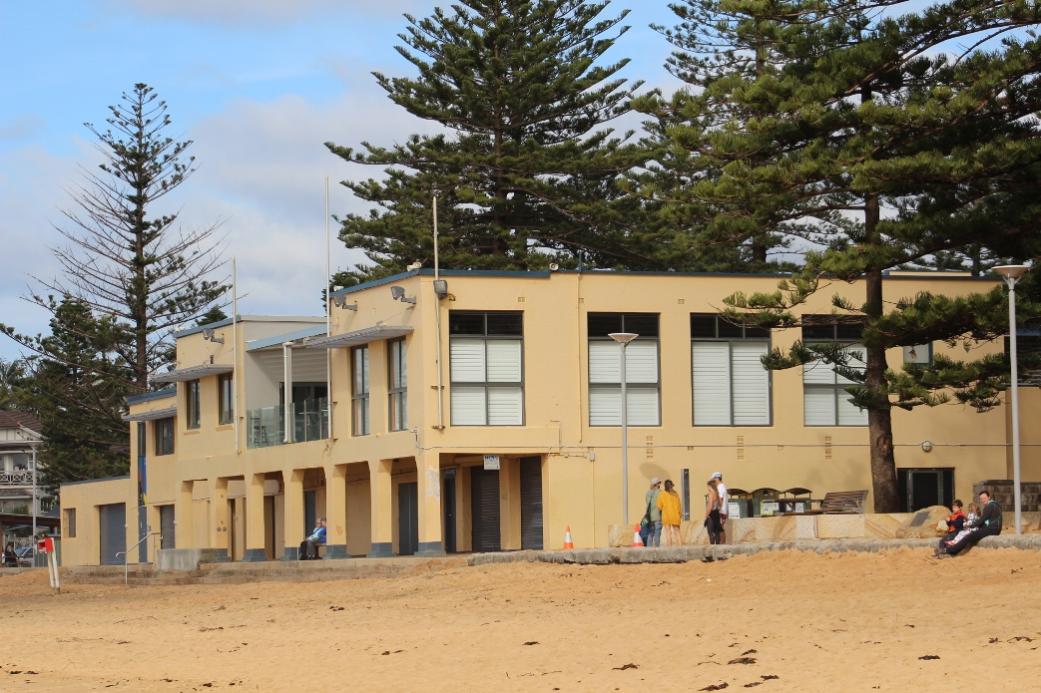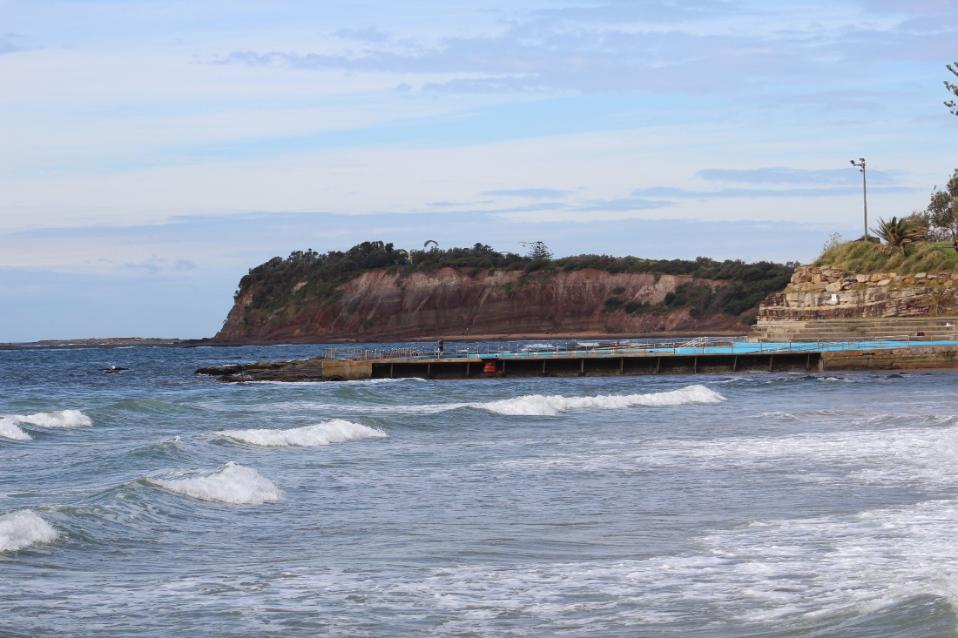May 27 - June 2, 2018: Issue 361
The Collaroy Paddle Steamer: New Ephemera Added To Public Records - Her Connections To Pittwater
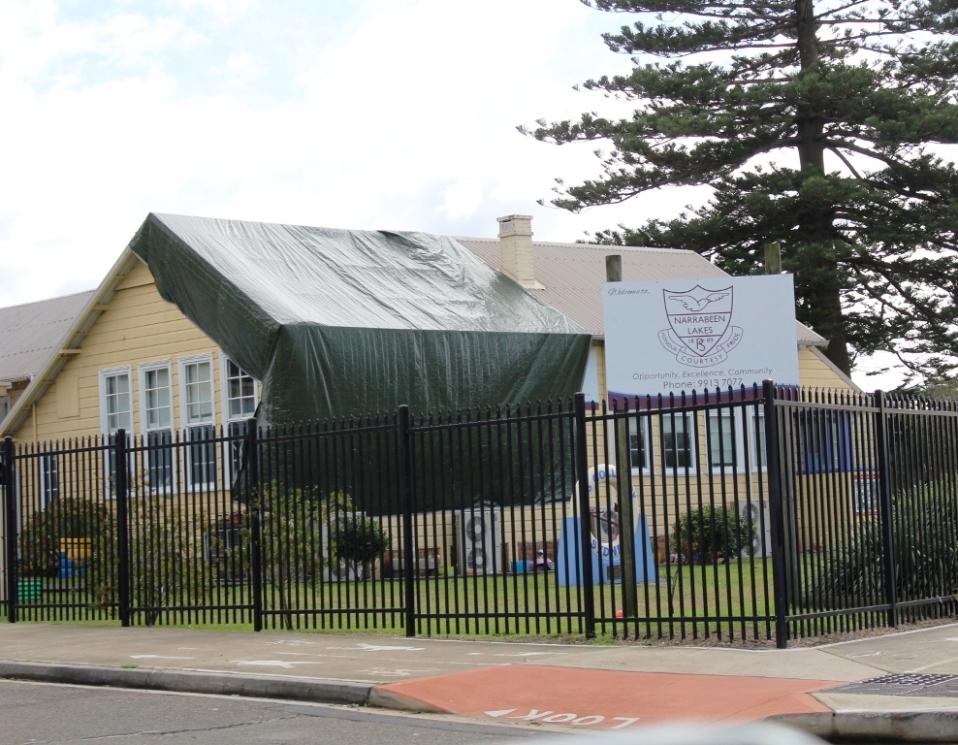
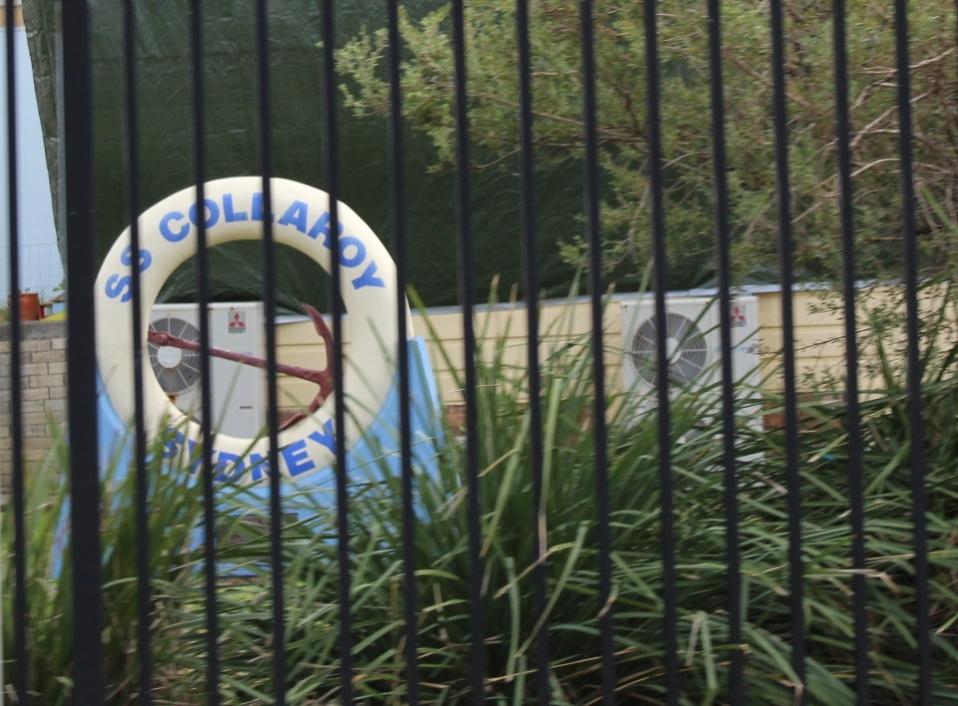
164 Year-Old Bill Of Sale For PS Collaroy At Home In The State Library
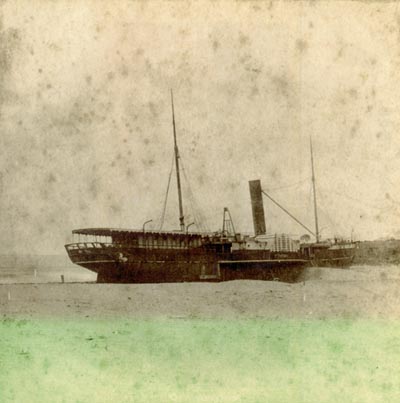 Ms Upton said the NSW Government and Heritage Council of NSW arranged for the 164 year-old document to be conserved and it will now form part of the Library's collection.
Ms Upton said the NSW Government and Heritage Council of NSW arranged for the 164 year-old document to be conserved and it will now form part of the Library's collection.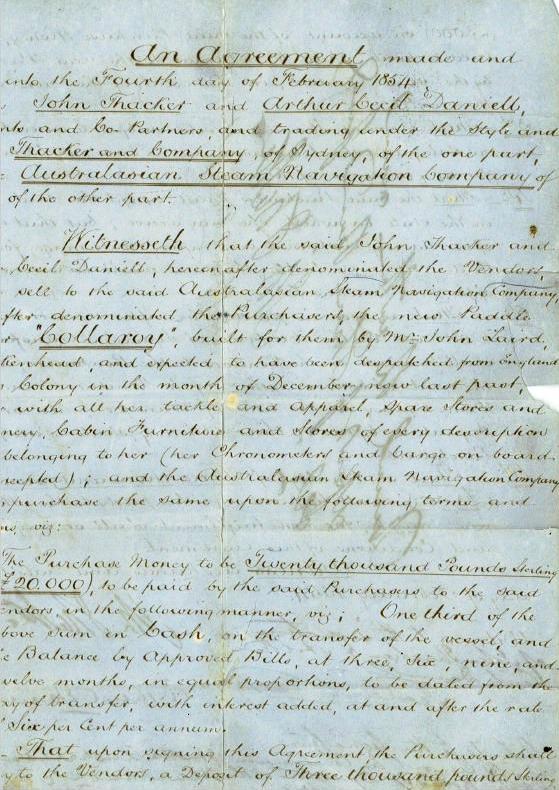
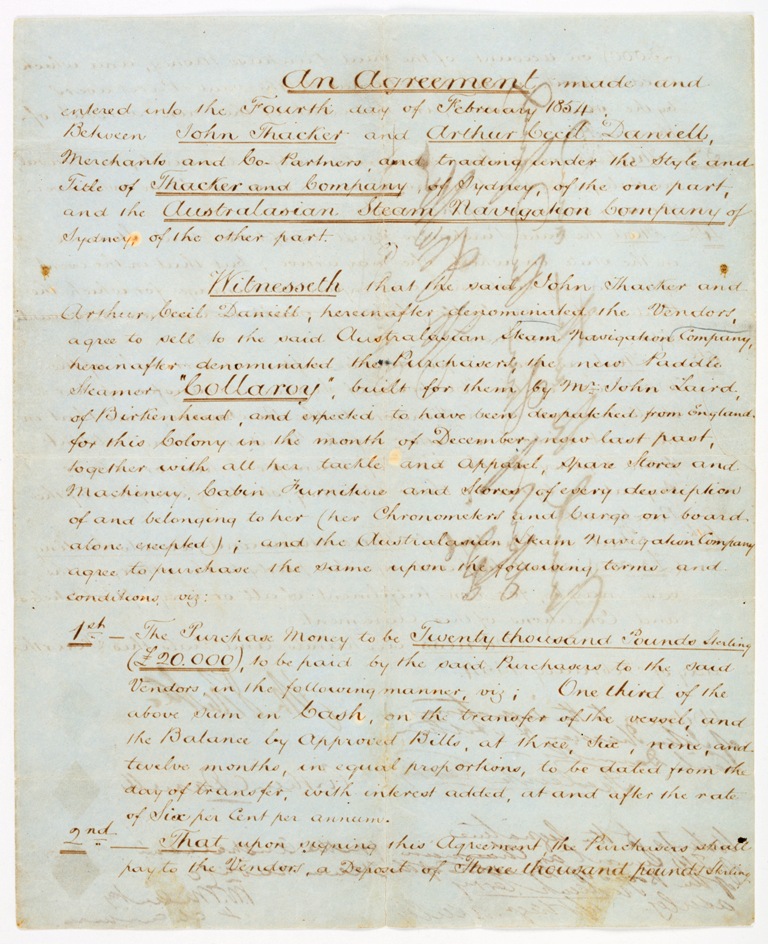
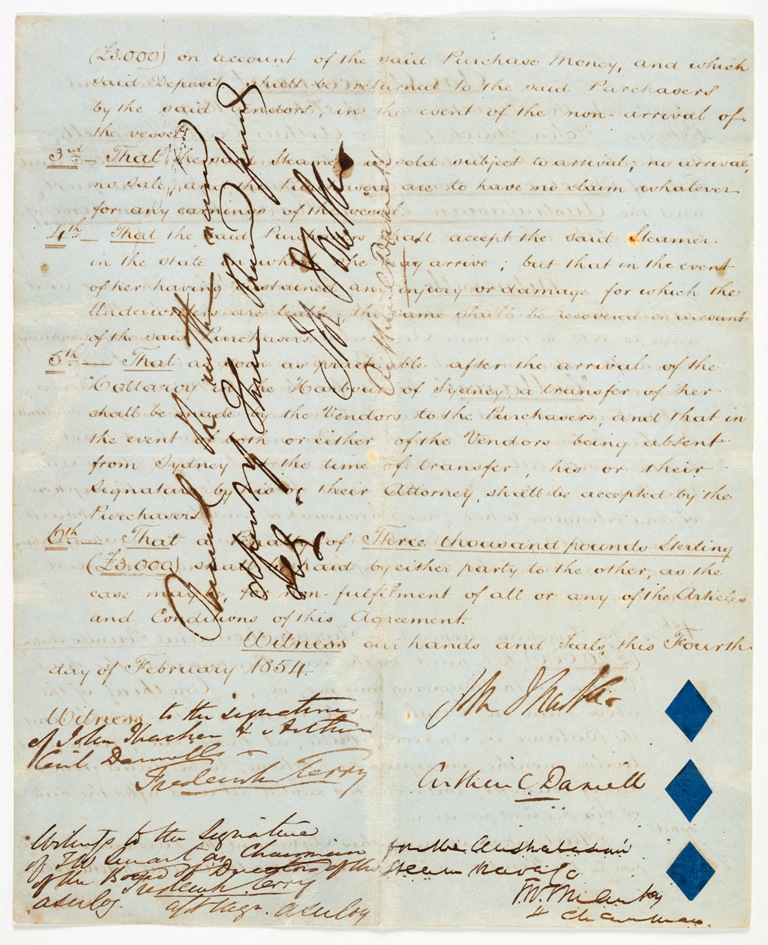
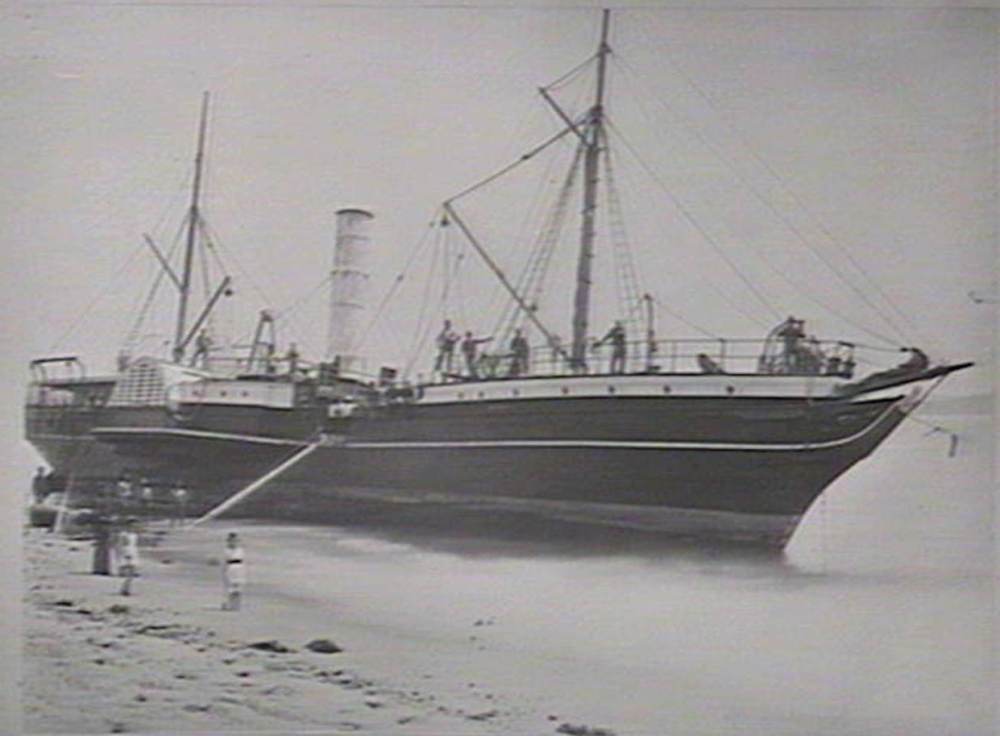
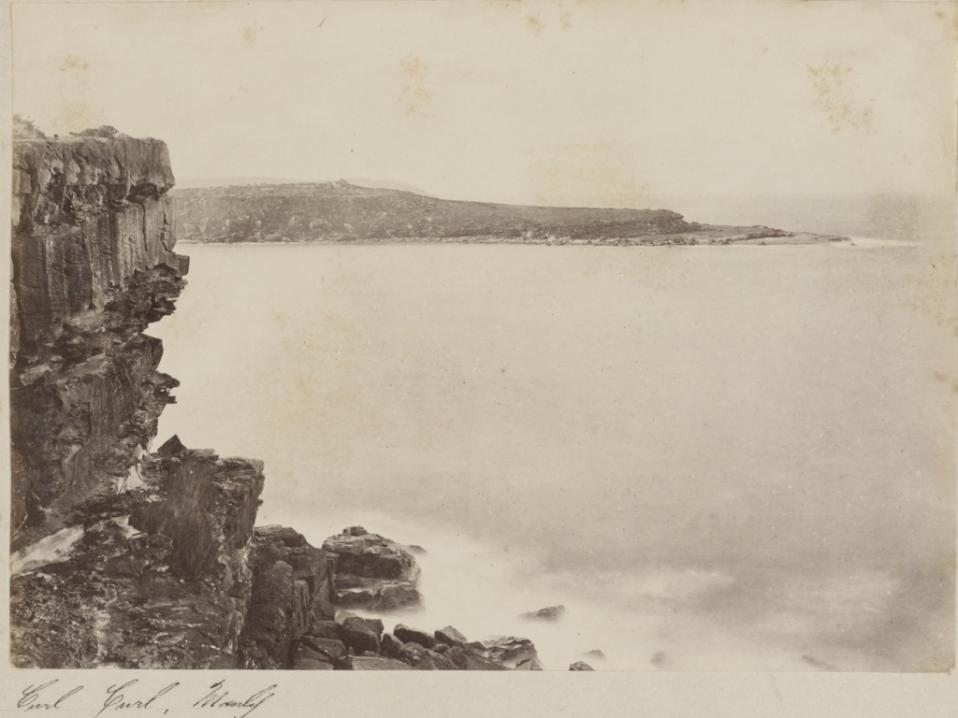
William Mulhall - 1807/09 - to 1890
Records
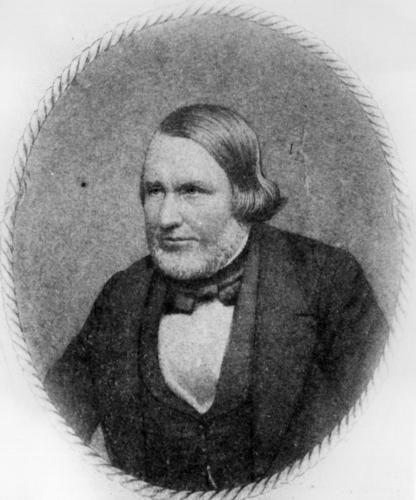
Right: William Mulhall, courtesy ~ State Library of Queensland : digital image collection ~ Portraits, Image No.: 195558
The oldest inhabitant of Pyrmont is Captain William Mulhall, who resides in Harris Street. Captain Mulhall is a native of Parramatta, and was born on 2nd May 1808. He has been a resident of Pyrmont for more than fifty years. He commanded the first steamer brought to this colony - the Sophia Jane - and traded with her up the Hunter. He subsequently entered the A.S.N. Company's service, in which he remained for eight and twenty years. The captain who is still as brisk as a bee, and in the full possession of his mental faculties, recollects the time, more than seventy years ago it is, when Pitt street and Castlereagh street were full of tree stumps, and many a time has he stood and watched the convicts grubbing them out of the soil. Black fellows about Pyrmont in those days? said the captain to the writer. 'Any amount. They most frequented Benelong's Point, where the battery now stands. They had a big camp up there. Oh! I remember them well'. PYRMONT. (1889, July 25). Illustrated Sydney News (NSW : 1881 - 1894), p. 19. Retrieved from http://nla.gov.au/nla.news-article63621825
The Collaroy arrived in Sydney, Australian waters, on Monday May 1st, 1854
The Collaroy (s.), built for Mr. Thacker, and lately purchased from him by the A.S.N.Company, arrived yesterday morning, after a passage of 113 days from Beaumaris, under canvas only. She appears to be a vessel of superior model, and admirably adapted for the inter colonlal trade. She reports the schooner Emily Harrison, from Glasgow to Melbourne, io latitude 37-50 8. and longitude 116-14 E., 135 days out ; also, sighted a screw steamer standing to the Eastward, In latitude 39-55 S. and longitude 13C-12 E. ADELAIDE. (1854, May 2). The Sydney Morning Herald (NSW : 1842 - 1954), p. 4. Retrieved from http://nla.gov.au/nla.news-article12959093
The Collaroy having been refitted will take her first trip to the Harbour about the end of the week. SHIPS' MAILS. (1854, May 29). The Sydney Morning Herald (NSW : 1842 - 1954), p. 4. Retrieved from http://nla.gov.au/nla.news-article12954078
The Australasian Steam Navigation Company's new steamer Collaroy went down the harbour on 5th inst., to enable the Government Inspecting Engineer to survey her previous to her being laid on as a regular trader to the Hunter, and the Directors took the opportunity of inviting a number of the share-holders and other gentlemen to witness her performance.
She left the wharf about half-past two o'clock, and was twenty-eight minutes to the Heads: the wind was blowing in heavy gusts from, the southward, and a nasty chopping sea was running, but the Collaroy went dead to windward at about nine miles an hour, and went over the seas with a very easy motion. When she was about two miles out many of the passengers declared they were "quite satisfied," and began to look very uneasy, so that it was deemed, advisable to return into port.
She then steamed up the harbour, and went round Cockatoo Island, where there was a large party with his Excellency the Governor General. She then went into Darling Harbour, and backed her stern, on close to the works proceeding for the erection of the Company's Patent Slip at Pyrmont, and after another run round Pinch-gut returned to the wharf about half-past five. The speed by the patent log was twelve knots, equal to fourteen geographical miles, on the average of two trials — one each way.
The engines, have oscillating cylinders, are beautiful pieces of machinery, and worked very smartly. The paddle floats are on the feathering principle— that is, instead of being fixed on to the arms of the wheel, as in ordinary vessels, they are so hung that as they come out of the water they shift their position and become vertical, and present the edge only to the water, thus avoiding the heavy lift which wastes so much power: it is to this improvement that the absence of the vibrating motion, usually so unpleasant, is to be attributed. The saloon is lofty and well ventilated, and in addition to the usual sofa berths there are several small cabins for families; and on the whole she is admirably adapted for the trade. It has been before stated that this vessel was built for Messrs. Thacker and Co., by Messrs. Laird and Co., of Liverpool, the builders of the Clarence. She was purchased by the Company about two months since for £20,000, and, from, the advance which has recently taken place in the price of every description of iron manufacture, was undoubtedly a bargain. NEWCASTLE. (1854, June 12). The Shipping Gazette and Sydney General Trade List (NSW : 1844 - 1860), p. 101. Retrieved fromhttp://nla.gov.au/nla.news-article161107390
The Collaroy, steamer, which left here on her first trip to Morpeth, on Wednesday last, arrived last evening after a passage of seven hours from the wharf at Newcastle, to the wharf at Sydney, against a strong gale from the S. W., with a heavy head sea running. On the passage down, going only at half speed, she had to heave-to off Newcastle, at 3 a.m.till day light, in consequence of it being so very dark.SHIPS' MAILS. (1854, June 10). The Sydney Morning Herald (NSW : 1842 - 1954), p. 4. Retrieved from http://nla.gov.au/nla.news-article12959378
LAUNCH OF THE GRAFTON.— Yesterday at noon, the paddlewheel steamer Grafton, for the Australian coasting trade, was launched from Mr. Laird's building yard, at Birkenhead. The Grafton is 145 feet long, 23 feet beam, 12 feet deep, and about 350 tons old measurement. She is to be fitted with engines of 300horse power, by Messrs. Forrester and Co., the cylinders being 41 inches in diameter and 44 inchec stroke. She is furnished with large boilers as the coal of Australia is not good, and she is designed, with this disadvantage, to carry a large cargo and several days fuel at 7 feet 6 inches draught of water. The Grafton has excellent accommodation for first and second class passengers. She is more strongly built than is usual in vessels of her size, having heavy frames, kelsons, beams, &c, to prevent any danger when taking the ground. Capt. Wiseman, a gentleman of great experience in the Australian coast steaming, who superintended and took out the Clarence to Australia about two years ago, has been sent home to have the Grafton built, the Clarence having proved so successful in all respects as to sell for £7,000 profit on her original cost, and is said to have amply repaid her purchasers at the price paid for her. The Collaroy, a similar vessel to the Clarence, by the same builder, sent out last January, was also sold, to arrive, for a large freight. The Grafton's engines and boilers being complete, they will be put on board this week, and she if expected to be ready for sea by the end of the month. The vessel is rigged as a brig. She was launched with her masts standing and her yards crossed, and she was successfully committed to the water. The ceremony of christening was entrusted to Miss Ellen Laird, a very young lady, who christened the Colla-roy, and as she was so successful a ship, Miss Ellen was elected to perform a similar honor to the Grafton. We may add, that this is the tenth vessel we have announced the launching of by Mr. Laird since January last, the aggregate tonnage of which amounts to 11,000 tons register, or as ships are advertised, twice 11,000 tons burthen, and comprising vessels of every size, from the miniature African exploring steamer Pleiad, constructed fer the sun-governed waters of the Niger and Tebudda, to the majestic ocean steamers. Nubia and Pera, of 2000 tons register each : an amount and variety of production which has no parrallel in modern ship building.— Liverpool Courier, August 2 . ELECTRICITY ON BOARD SHIP. (1854, November 6). The Shipping Gazette and Sydney General Trade List (NSW : 1844 - 1860), p. 217. Retrieved from http://nla.gov.au/nla.news-article161108676
To the Editor of the Empire
Sir- a letter signed James M'Clune, of the schooner Perseverance, reflecting upon my character, appeared In your Friday's publication, and as all such assertions should bear the stamp of truth, I took the first opportunity of communicating the real facts of the case. Perceiving on my going to Newcastle that the vessel was in distress, I went within hail and asked if they wished to be towed into port, the reply was Yes ; a warp was then sent on board. I then said you must give up charge of the vessel to me whilst towing you, otherwise I cannot take you. Captain M'Clune said he would not do so, and let go the warp. The Collaroy again steamed within hail, and the hawser was again sent on board. Captain M'Clune asked me what I would charge to tow him in. I said that would be settled by the directors or arbitration; he Indignantly objected and let go the hawser.
As to his statement that he offered very reasonable compensation, if he did so he must have spoke in a very low tone of voice, us no one on board the vessel heard him ; and I distinctly deny that I made any demand for salvage. I beg also to state that my orders from the Directors are that I am not to tow vessels at sea without their express orders ; and, therefore, what I did was on my own responsibility, and for the purpose of assisting the vessel, which appeared in distress, and consequently it was not in my power to fix any price. Trusting you will report this, I am your's obediently,
WILLIAM MULHALL.
Steamer Collaroy,
2nd September, 1854
To the Editor of the Empire. (1854, September 4). Empire(Sydney, NSW : 1850 - 1875), p. 4. Retrieved from http://nla.gov.au/nla.news-article60194585
To the Editors of the Maitland Mercury.
GENTLEMEN-It is pretty extensively known that I have been in command of one of the Hunter River line of steamers over twenty years, the whole of which time it has been my study to avoid making statements of a personal nature; and by the observance of every possible precaution to prevent injury to others, have successfully passed through the whole above period without having occasion to solicit the favours of Messieurs Editors for a corner in their paper until the present, and will there-fore, without further apology, trouble you to give insertion to the following particulars of the collision-not having seen, or having any previous knowledge of the paragraph referred to, what Captain Barnes, of steam-ship Williams, has attempted lo do in his letter, but failed. On Saturday last, 7th instant, the two steamers arrived at Newcastle from Morpeth about the same time-the Collaroy at the new, and the Williams at the old wharf, blowing fresh from the W.N.W. After landing passengers and cargo, the Collaroy turned ahead, but, could not clear the wharf-reversed the engines, and was going out astern, and would easily have cleared everything ; when, strange to say, the Williams steamed down the channel, and came in collision with the Collaroy (although our engines were stopped), striking us on the starboard quarter, injuring the life-boat, splitting the quarter-deck rail, bending the awning stanchions, and doing other slight damage, which could easily have been avoided if common precaution had been observed.
It is well Captain B. mentions that be got a lead of 10 miles, as probably it will account for the surprise expressed at his being first in, although the Collaroy was nearly 2 feet deeper laden
I am, gentlemen, your obedient servant, WILLIAM MULHALL, Commander of steam-ship Collaroy. Morpeth, 13th June, 1856. To the Editors of the Maitland Mercury. (1856, June 14). The Maitland Mercury and Hunter River General Advertiser (NSW : 1843 - 1893), p. 2. Retrieved from http://nla.gov.au/nla.news-article18649780
TO CAPTAIN MULHALL, STEAMER COLLOROY.
[PER FAVOUR OF THE EMPIRE.]
Sir-Permit me thus publicly to tender you my most heartfelt acknowledgment, and warm admiration of the prompt humanity which brought you alongside the Nora Creina, steamer, in answer to our signals of distress. 'Tis true the night was calm-for which God be thanked-and the danger less; still there was imminent danger, we were within 150 yards of that dread rocky coast, where the Dunbar met her fearful doom ; we were powerless, you drew alongside, took us in tow, and brought us safe to our moorings at the Phoenix Wharf ;for which humanity and marked urbanity, I shall ever feel most grateful, and ever retain the most lively and sensitive recollection.
I would also express my admiration of the prompt action of the pilots. They answered our second signal and five boats were with us within half-an-hour, but alas !what fearful disasters might not have occurred within that short space of time-though short, an age in time of peril.
The proper authorities will no doubt enquire into the cause and nature of this accident; I am not competent to give any opinion on the subject, except upon report, which I seldom rely upon, but if report speak truly, there is very great blame attachable to the proper authorities-or the engineer and Government Inspectors.
I am, Sir,
Your most grateful and much obliged servant,
GEORGE UNDERWOOD ALLEY.
Sydney, September 20th, 1857.
TO CAPTAIN MULHALL, STEAMER COLLOROY. (1857, September 30). Empire (Sydney, NSW : 1850 - 1875), p. 5. Retrieved fromhttp://nla.gov.au/nla.news-article60267270
WRECK ON THE COAST,-Captain William Mulhall of the A.S.N.C'o.'s steamer Collaroy, on ascertaining that a wreck was supposed to have taken place somewhere in the vicinity of Terrigal Beach, determined to examine the coast on his passage to Newcastle. When going down on Thursday last, he saw a spar sticking up on the surface of the water, but not having discovered it until he was some considerable distance from the place, he took the bearings of it, and determined to Inspect it minutely on his return to Sydney. When he came to the place on returning from Newcastle, he lowered a boat with the chief officer and four of the crew, who reported that it was the top-mast of a schooner or brig, but could not say which. The chief officer was of opinion that the spar was fast to the hull of the vessel at the bottom, but nothing that would lead to the name of the vessel was seen. The locality is about two miles from the shore off the rocks at Terrigal Head. Great praise is due to Captain Mulhall for his zeal In Investigating this matter, as it will no doubt be enquired into by the authorities. This is probably the vessel of which portions were seen floating between this port and Newcastle, and reported by the steamers trading to the Hunter, and also the same as that reported by the oyster boat some weeks since, portions of which were seen at Tuggerah Beach.-Empire, Aug. 29. SYDNEY SHIPPING. (1859, September 1). The Maitland Mercury and Hunter River General Advertiser (NSW : 1843 - 1893), p. 3. Retrieved from http://nla.gov.au/nla.news-article18642584
One of the earliest mentions of the jetty at Careel Bay and the volume of excursionists, a popular pastime, bought to Careel Bay where the pastimes of the era were practiced, stems from one of the benevolent gestures of the largest landholder:
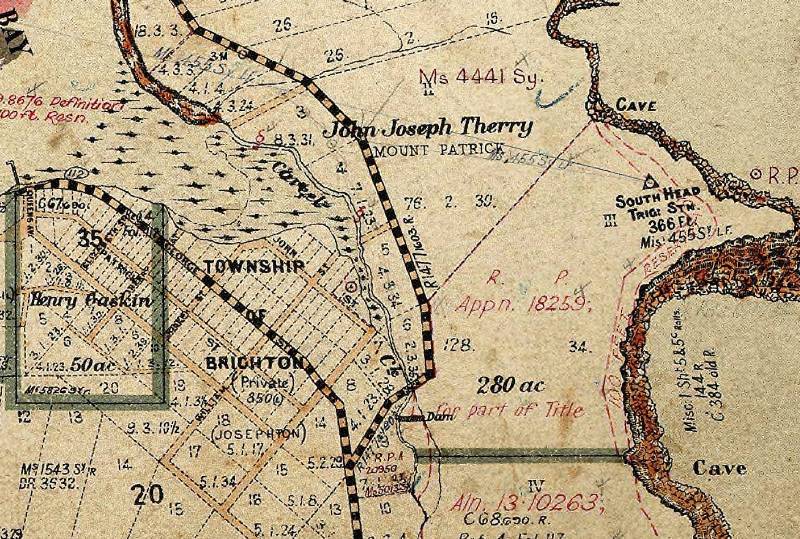
PITT WATER.
Yesterday, being Easter Monday, a pleasant steam excursion took place in connection with the St Benedict's Young Men's Society. The commodious steamer the Collaroy, under the command of Captain Mulhall, had been chartered for the occasion, and left the Australasian Steam Navigation Company's Wharf, Sussex-street North, with about 260 persons on board, at ten o' clock a.m. Part of the band of H. M. S. 12th Regiment were in attendance, their cheerful and untiring efforts contributing not a little towards making the day pass harmoniously and agreeably away. Working along through the ever changing scenery displayed on the shores of our harbour, the Collaroy at length rounded the Heads, and, taking a northerly course, rushed past that enormous barrier presented by the weather-worn cliffs which face the ocean between the Great North Head and the seaward aspect of Manly Beach. Following on the interesting coast line of Curl Curl, Dee why, Long Reef, and Narrabeen, &c, - varied succession of wooded eminences, long sandy reaches, towering precipices, and grassy park-like slopes, - the pleasure-seekers were at length abreast of the singular headland of Barrenjoey, forming the extreme south-eastern limit of the estuary which serves as a common outlet for the River Hawkesbury and the Pitt Water. Shortly after passing the Custom House station the course of the Collaroy then took a southerly direction, and so brought the holiday folks into the lake-like solitudes of Pitt Water, until wooded hills seemed to be rising on every side of the vessel.
The passengers were landed at a small, but commodious wharf, erected on the property of the Venerable J. J Therry, under whose especial patronage the excursion had been got up. Most of the visitors set off in quest of St. Michael's Cave, determined not to lose the opportunity of seeing so great a natural curiosity. The walk, it was found, lay through woods, a long flat, and a hilly scrub, until, facing to the east at the head of the inlet, the merry party, in a straggling Indian file, at length arrived in the vicinity of the cave, cautiously descending the rocks, and creeping carefully along a narrow path specially made for their convenience on the face of the cliffs, they were thus finally rewarded for their perseverance. Almost every body managed to scramble up into the cave, and not a few of the more adventurous explored its inmost recesses by candle-light. The effect of the gloomy inner arch looked down upon from the top of the second angle of the cave, was much admired; and so also was the wider arch at the entrance, as contemplated from the spot where the bright daylight again began to stream down upon the faces of the returning explorers. There was, for some time, a pleasant buzz of conversation and a discussion of food at the mouth of St Michael's Cave, and then the party set out on their way back to the steamer, where dinner had been prepared.
Some with sharpened appetites posted thither at once, but many remained with the band near the house on the flat, and amused themselves with dancing, playing cricket, and so on. There was some dancing also at the steamer after dinner was over. The Kembla steamer visited the wharf at an early hour, landed some passengers, and afterwards returned for them. The Collaroy left the wharf for Sydney at about five o'clock, and arrived safe at Sydney soon after eight. The Right Worshipful the Mayor of Sydney, the Mayoress, and other members of the family were on board. We also observed the Rev. Fathers Corish, Curtis, Hanson, and Powell, besides the Venerable J. J. Therry. The trip appeared to give general satisfaction, although a slight shower, soon after the arrival of the Collaroy at Pitt Water, interfered with some of the arrangements.
PITT WATER. (1862, April 22). The Sydney Morning Herald (NSW : 1842 - 1954), p. 4. Retrieved from http://nla.gov.au/nla.news-article13227471
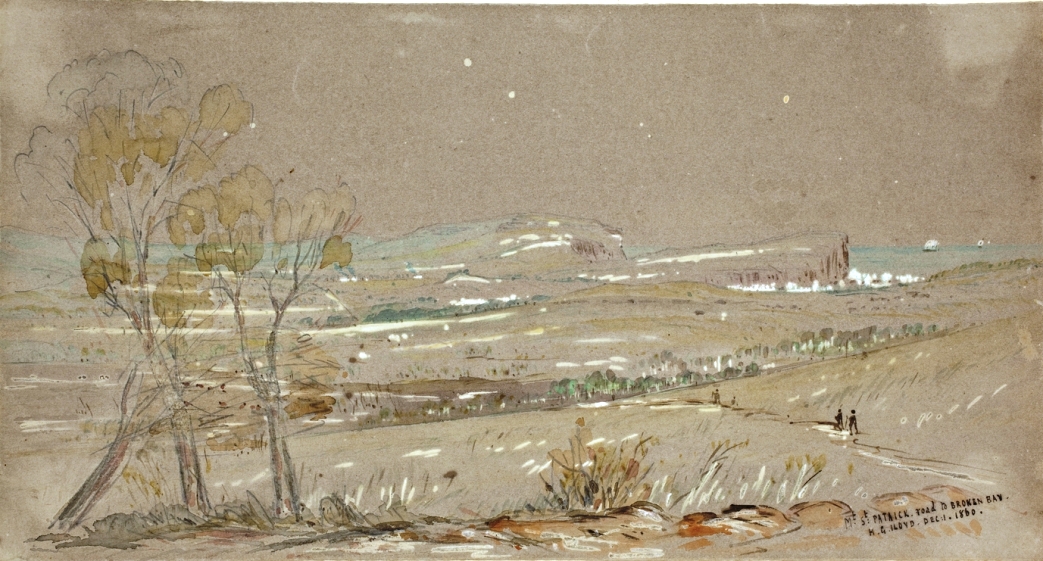
Maps from the period, especially that of the 1882 Sales brochure, show the jetty to extend from the front of land previously owned by Gaskin. A communal jetty for all visitors and those living there.
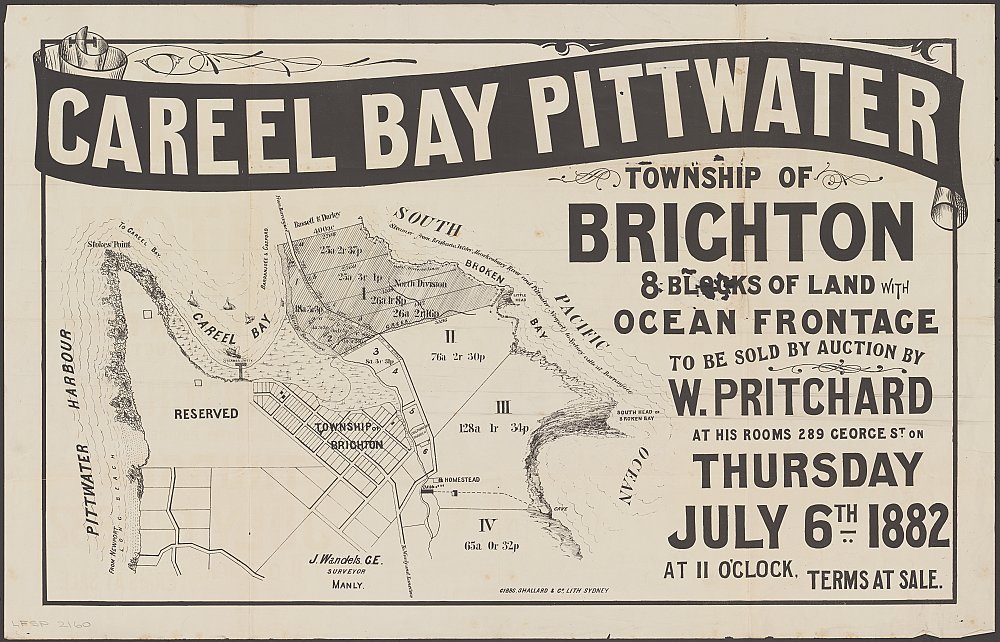
Careel Bay Pittwater [cartographic material] : township of Brighton, 8 blocks of land with ocean frontage 1882. MAP Folder 135, LFSP 2160 by Pritchard, W., courtesy National Library of Australia.
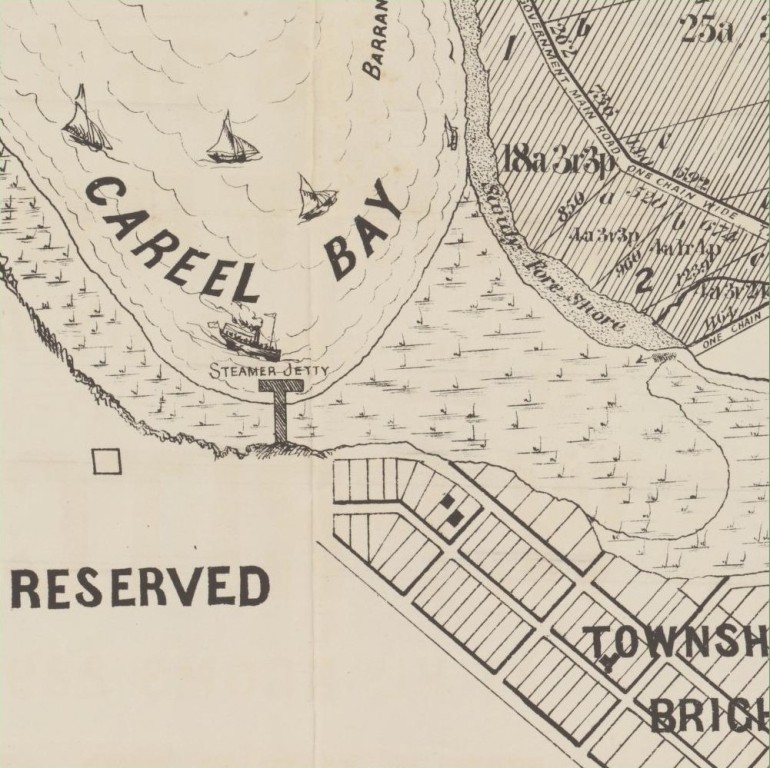
Stranding of the Collaroy.
The Newcastle Steamship Company's paddle steamer Collaroy did not arrive in Sydney from Newcastle as usual on Thursday morning, and the delay was accounted for by the dense fog which overhung the coast line in the vicinity of this port. Later on, however, a telegram from Manly announced that the vessel had run on shore while enveloped in the fog, but there was every hope of her launching on at high water.The Collaroy left Newcastle at the usual time on Wednesday night, and ran on shore on a beach close to Long Reef about 4.15 a.m. on the following morning. Fortunately the sea was comparatively smooth.Attempts to get the vessel off failed, and she remained firmly fast, with her broadside to the beach. The landing of the passengers, 40 in number, was successfully accomplished, and on the news reaching Manly several coaches were sent down by the road to bring them overland.
Captain Hixson, president of the Marine Board, on being informed of the accident, at once telegraphed to South Head for the pilot steamer Captain Cook to proceed to the Collaroy's assistance, and that vessel steamed through the Heads at 20 minutes past 10 o'clock.The owners of the Collaroy acted promptly, in order if possible to save the vessel, and two powerful tugs and a diver were sent to the scene of the accident. Mr. Hunter, the N. S. N. Co.'s superintendent engineer, accompanied by Captain Anderson, of the Kembla, left Sydney for Long Reef via Manly, and remained by the Collaroy till dark last night. The company's superintendent-engineer (Mr.Hunter), accompanied by Captain Anderson, of the Kembla (belonging to the same company), arrived at the Collaroy overland by way of Manly, at a quarter past 4 o'clock, and pronounced an opinion that as the ship had made a bed for herself she could not be got off without some additional anchors and chains.The Prince Alfred, Newcastle tug, arrived at 5.30 p.m., and hove-to just outside the breakers. The wind had been blowing fresh from N.E., and just after the arrival of the above vessel it chopped into south, blowing strong, and causing a heavier break on the beach. Captain Thompson and a crew succeeded in launching the lifeboat from the beach and attempted to communicate with the tug ; when on the outer edge of the breakers a sea struck her, and she half filled with water, and fell off in the trough of the sea. The next roller sent her flying in towards the beach full of water, proving that communication by boat was out of the question.
Since the first inauguration of steam communication between Sydney and the Hunter River the steamships employed on the line have had a most fortunate career.There is only one instance of a total loss on the coast, viz., the City of Newcastle (s.), which went on shore set night time when making the passage hence here.
The Collaroy, which now promises to be a total loss, is the second serious casualty on this line. She has had a career of some 25 years, unbroken by accident of any kind, and from her earliest days down to the present she has been regarded as a trustworthy sea-going craft, and did much for the profits and good name which the Australian Steam Navigation Company gained. Some two years ago she was purchased by the Newcastle Steam Navigation Company, and since that period has been steadily employed in the Newcastle trade, performing her trips with singular regularity at the rate of five per week.
Some four months since she underwent extensive repairs; all her plates were bounded, and any that were thought to be defective were removed. She was fitted with a new superheater, new sponsons, paddle-boxes, funnel, and donkey-engine. The vessel is only partly covered by insurance, and should she break up it will be a serious loss to the company. The scene of the accident is about 6 miles north of Manly, and by a journey of some 45 minutes by coach from that place the Collaroy can be reached. She lies, with her head pointing south-south-east, on the southern end of a Iong beach that forms the segment of a circle, and stretches northward from Long Reef. Had the vessel hit the coast 100 yards further south she would have very quickly broken up.
The place where she is onshore is the most sheltered in the locality. As the tide rose the sea beat her further on the beach, just where the low-lying road to Pittwater takes a sweep near the sea ; and had the Collaroy been able to get a trifle more than her length inshore she would have been athwart the Queen's highway. The vessel's position is tolerably well sheltered, as the extreme point of the reef bears about S.E. by E. from where she lies. Should the wind set in heavily from south-east, or indeed if a very heavy sea should break on the coast, the Collaroy will very soon go to pieces. The vessel bumped slightly throughout the day, but nothing to cause any fear of her breaking up ; when the southerly came on in the evening the surf broke more heavily, and as the tide began to make the vessel became more restless, and during the night would, no doubt, be driven higher up on the beach.At the time we are writing the wind is strong from south,and so long as it continues no attempt to float the vessel can prove successful. Last night Captain Thompson had a line run out from the Collaroy's stern to the shore, to serve the twofold purpose of keeping the vessel steady, and to enable the crew to abandon her, if necessary, during the night.
The Collaroy had on board 14 saloon and 10 steerage passengers. The cargo comprised 7 bales wool, 170 bags potatoes, 200 hides, 40 casks tallow, 40 pigs, 30 sheep, and sundries. The live stock was landed on Thursday afternoon,and driven into a paddock close by the wreck.Captain Thompson has been for some years in the company's employ. He first joined the Kembla (s.) as second mate, and by dint of perseverance and hard work rose to the position of captain, and bears the name of a steady and reliable man.
THE CAPTAIN'S STATEMENT.
In the course of an interview with Captain Thompson, on board the vessel on Thursday afternoon, he stated : The vessel left Newcastle at 11 p.m. on Wednesday night, and in fifteen minutes was clear of Nobby's, the night being beautifully clear and moonlight. The usual course, south by west, having been given to the chief officer, I wont below at half-past 2 o'clock, giving orders to be called when the ship neared Long Reef. The mate called me at five minutes to 4 o'clock, stating that he thought the vessel was off Long Reef, and at the same time reported the weather as thick ;I reached the bridge in a few minutes later, and he pointed out what he took to be Long Reef, on the starboard quarter, the land being barely visible ; I could not determine what it was, but it certainly looked like Long Reef ;the mate and myself were standing on the forepart of the bridge at 4.15 a.m. ; the ship was going at her full speed, about 10 knots, when the breakers suddenly became visible on the lee bow.The engines were stopped, turned full speed astern, and the helm put hard to starboard; the vessel, however, struck easily, the shock not being sufficient to cause any alarm among the passengers. The engines continued astern for nearly half an hour, but the ship remained fast on the sands, and slowly moved further inshore. Finding that she would not come off, the boats, which had been quietly got ready for launching, were lowered ; the lifeboat first,to land the passengers; the ladies and children were put into it, and all landed through the surf, without any accident, as the surf outside the breakers was very slight, and the landing was effected under shelter of the vessel. As the boats were unable to go close in shore, the lady passengers were either carried by the crew the rest of the distance, or waded through the water. In the early part of the morning we tried to get an anchor out in order to prevent the vessel from drifting further upon the beach ; the port anchor having been previously let go with 30 fathoms of chain, but it came home; the attempt to run the anchor out failed, as the life boat in taking it through the surf was stove, and the anchor was lost. When the first boat landed, a messenger left for Sydney, to request assistance, but it was half-past 11 o'clock before the Commodore bore down on us, she having accidentally discovered the vessel's position; I sent the second officer with six men to take the life-boat through the surf, in order to communicate with the Commodore, but after four futile attempts, I took charge of the boat, and succeeded in getting to the Commodore; the boat, however,nearly filled in getting through the surf; a small line was then taken from the Commodore to the Collaroy, and afterwards a new hawser was made fast to the bitts on the quarter. In the meantime the Mystery came up from Sydney, and having made fast to the Commodore, both tugs steamed ahead, and at the third heavy strain the hawser parted. I then wished to again go off in the lifeboat in order to get the hawser on board, but the crew refused to go with me. The Commodore then left the scene, and was soon afterwards followed by the Mystery.The Commodore revisited the locality in the afternoon but nothing could be done as the tide had receded.
.jpg?timestamp=1432986818693)
THE CHIEF OFFICER'S STATEMENT.
Mr. Drew, the chief officer, states : The Collaroy left Newcastle on Wednesday night at 11 o'clock for Sydney,in company with the Hunter River Company's steamer Morpeth ; both vessels kept company up to about 4 a.m., when the haze that had prevailed thickened into a dense fog, and the Morpeth was lost to view on the port quarter about half a mile distant ; I relieved the second officer, Mr. Henrick, half way between the two ports, receiving the usual orders and course,south-by-west. by standard ; when half-way across Broken Bay the fog increased in density, and I called the captain,who came on deck immediately'; the loom of the land was then visible to the south of Broken Bay, and suddenly I saw breakers on the starboard bow ; simultaneously the vessel grounded ; Captain Thompson gave the order ' Go full speed astern, and starboard the helm.' The order was promptly executed, but the ship refused to respond to the action of the engines, and gradually worked herself nearer the beach. There being no immediate possibility of the vessel coming off, attention was at once turned to the safety of the passengers. The starboard lifeboat was manned by myself and a crew of four hands ;the ladies, numbering half-a-dozen, and an equal number of children were hastily got into the boat ; after three or four trips all the passengers were safely landed, together with the whole of their luggage. In the meantime the second officer and a portion of the crew succeeded in lowering the dingy from the port side during the running of a heavy surf, which broke up against the ship's side.Immediately after the passengers landed, we got the lifeboat under the starboard bow, and got the starboard anchor and line in the boat to run out seaward, but after several efforts could not succeed, as the surf was very heavy, and we had therefore to cut the anchor away from the stern of the boat.During this time the dingy was pulling ahead of the lifeboat, to be in attendance in case of an accident ; on the return of the dingy before the surf, a heavy sea ran over her; she capsized, and the occupants — two men — had a severe struggle in the surf for some minutes, till picked up by the life-boat ; one man, named Wilson, narrowly escaped drowning, having been seized with cramp. The attempt to get the starboard anchor out having failed, the port one was let go,and 30 fathoms of chain payed out, still the ship dragged shorewards, the anchor not holding. The receding tide gradually left her quiet, the sea beating on the port side, the dry beach being on her starboard side. At 11 a.m. the Commodore (s.), Mystery (e.),and Captain Cook, from Sydney, arrived on the scene ;Captain Thompson and his boat's crew pluckily pulled off through the heavy surf, and conveyed small lines from the Commodore; a 13-inch hawser having been hauled on board and made fast to the bitts, all was ready at 1 p.m.,:and three steamers being fast one to the other they commenced to tow, and after pulling for ten minutes the hawser parted, and the attempt had to be abandoned'.
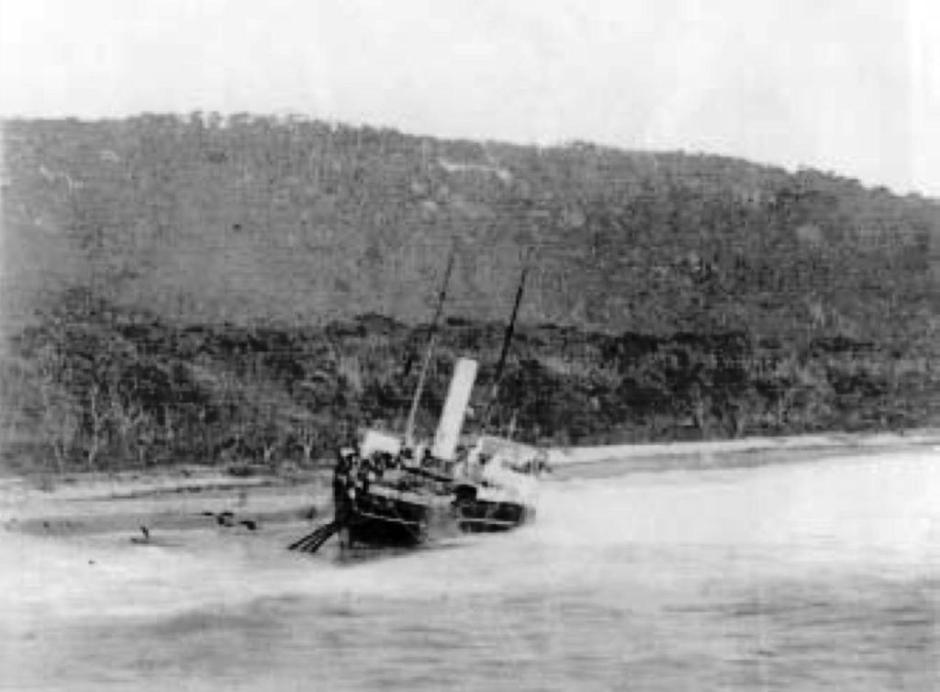
Stranding of the Collaroy. (1881, January 22 - Saturday). The Sydney Mail and New South Wales Advertiser (NSW : 1871 - 1912), p. 152. Retrieved from http://nla.gov.au/nla.news-article161882671
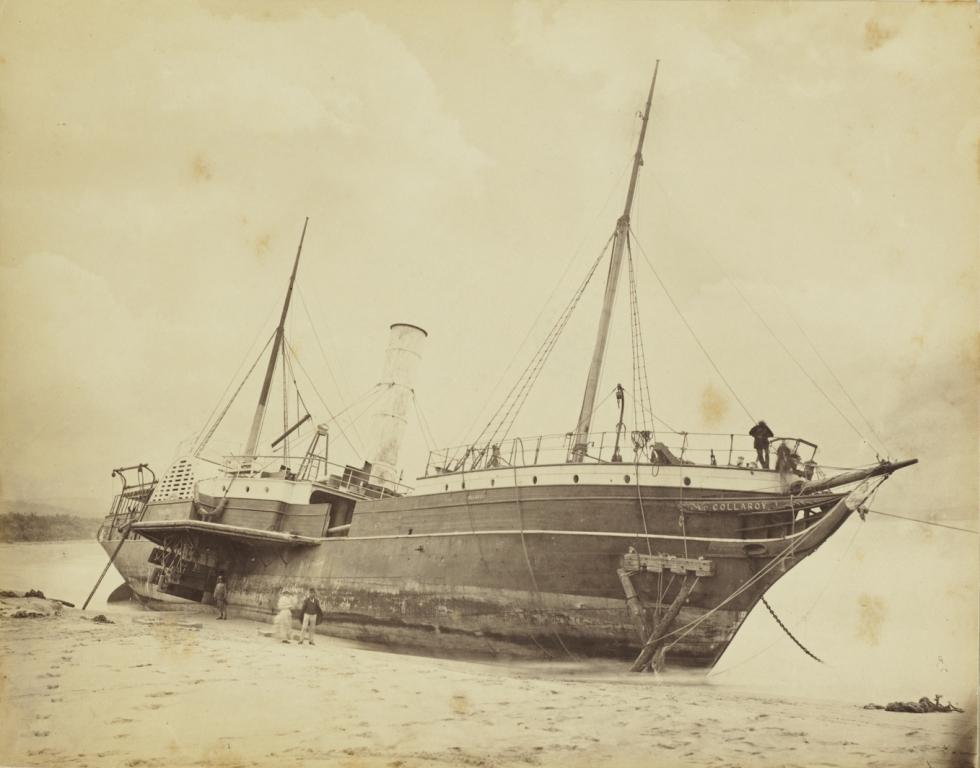
Wreck of the S.S. Collaroy, 1881 / photographer unknown. State Library of NSW Image No: a1528938: A passenger steamer owned by the Australian Steam Navigation Company, built in 1853, went ashore on Collaroy Beach in 1881 and remained there for almost 3 years, giving her name to the stretch of sand and ocean. When refloated she went back into service plying between Sydney and the Hunter River. She was withdrawn from duty in 1886, converted to a schooner, sailed to San Francisco, where she again ran ashore and broke her back on the Californian Coast in 1889.
The Stranded Steamer Collaroy.
The term 'ill fated' seems, unfortunately, to be becoming more and more applicable to the stranded steamer Collaroy. For twenty-five years this vessel braved winds and waves successfully ; but the reverses of fortune have cot in against her, and she is stranded in such a position that it is questionable whether she will get properly afloat again. All who travelled in her spoke of her most favourably as a quick good sea boat, in which they could journey with pleasure ; and all regret the disaster which has befallen her. During the past week hundreds of persons proceeded to Long Reef to see her.
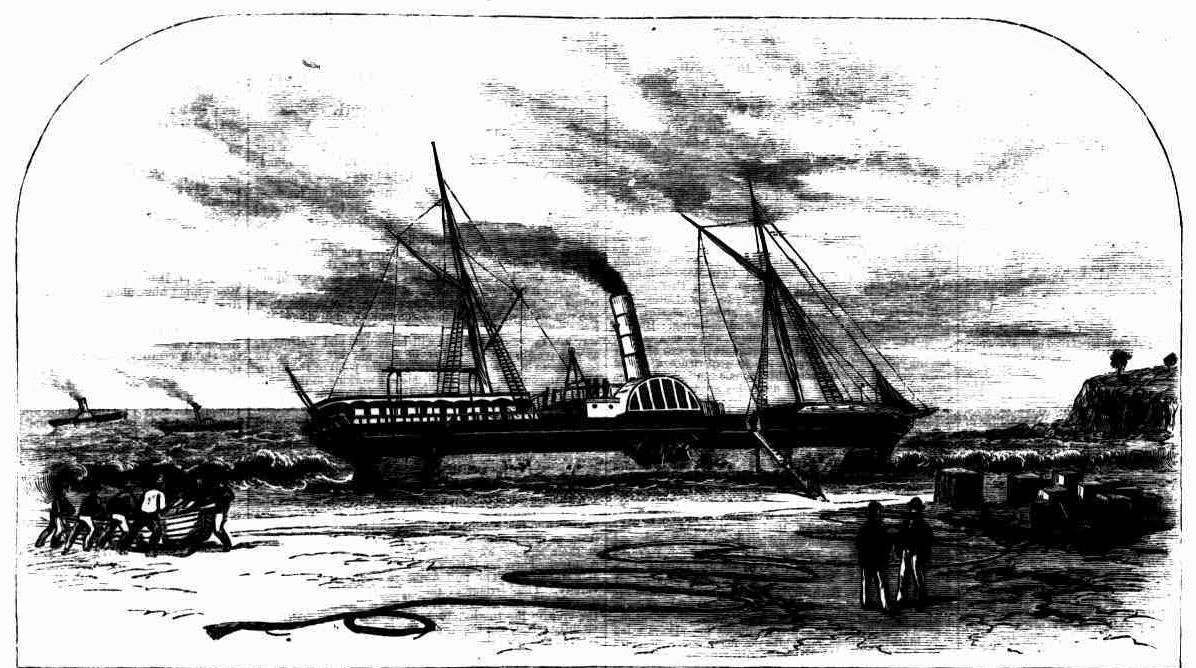
THE STEAMER COLLAROY ASHORE NEAR LONG REEF.
Her position has not changed very materially since Saturday week(22nd ult.), but circumstances transpired which for a brief period favoured the belief that she would be released from her peril. On Thursday and Friday mornings (27th and 28th ult.) the high tides set her afloat in her bed ; and it was resolved by Messrs. Brookes and Goodsir, of Newcastle, who contracted to endeavour to get her off, to attempt on Saturday to pull her into deep water. Accordingly, preparations were made Friday afternoon (28th) to set to work on the following morning. The Bungaree, the most powerful tug procurable, was brought from Newcastle with an anchor and 150 fathoms of chain cable. When the tide rose on Saturday morning (29th), the anchor, with one end of the cable attached to it, was sunk some distance from the shore, and the other end of the cable, having two strong purchases on it, was attached to the steam winches of the Collaroy. A tremendous strain was put on the cable; and, for a few moments, it seemed as though the steamer would be literally dragged over the sand surrounding her. The winches, which must be of admirable construction, did their work so effectively that the bows of the Collaroy were shifted thirty feet from where they had been lying ; but the breakers, running high, drove them to their old position, and increased the strain on the cable so suddenly and immoderately that it snapped asunder. After some deliberation it was resolved, on account of the rough sea and the receding tide, to delay further operations until the following morning (30th), when it was proposed to procure a hawser in place of the chain cable, and endeavour to pull the Collaroy off with that. In the meantime the waves beat mercilessly on the vessel's sides, and it was thought would break them in.
On Sunday morning the hawser was attached to the anchor and the winches, in the same manner as the cable had been, and a strain was put upon it sufficient to move the bows of the steamer seawards for about twelve feet, when, like the chain, it snapped asunder. Then occurred the most unhappy incident that has taken place in connection with this mishap. The sea ran high, and while Captain Thompson and five men were 'tending' the hawser, it swamped their boat and sent them adrift. The boat was dashed to pieces; and although Captain Thompson and four of the men succeeded, after much exertion, in reaching the shore, the fifth man was lost, having, it is supposed, been entangled in seaweed, which grows abundantly in the vicinity of the rocks. Efforts were made to save the unfortunate man, but they were unsuccessful. The deceased was formerly engaged on the Collaroy as one of her crew, and known by his mates as Hercules, which, it appears, was his Christian name. It was said that he was a native of the Shetland Islands, and about thirty-three years old. His death cast a gloom over the little band who have been working so earnestly to get the steamer afloat. When the hawser, which had been so much relied upon, snapped, the efforts to move the Collaroy were abandoned. All the efforts made on Sunday to get the Collaroy into deep water proved ineffectual, although the chances of their being successful were considered good. An attempt H was made to tug her off by means of a hawser attached to the windlass bitts, but when the bows had been drawn seawards a short distance the bitts broke, and she resumed her former position. The hawser was made fast to the shaft of the steamer, and a strain put upon it to prevent the waves drifting; her farther up the beach, but the tide receding, and the vessel consequently settling in her bed, rendered a continuance of the operation B unnecessary. The gale which blew on Sunday night did not damage the Collaroy, but raised a very lively sea.
On Monday afternoon the body of the sailor — Hercules Dalziel— drowned on Sunday morning, was washed ashore within a few yards of where it disappeared. It was observed being borne inwards on the crests of the rollers, and as it B neared the strand it was seized by some of the men. The face was bleeding slightly as though it had struck the rocks or beach, but otherwise no disfigurement was discernible. The hands were clenched, and the arms bent stiffly over the body, but no marked expression of pain was apparent in the features. The body was carried tenderly by the man's mates to a grass plot near at hand, where it was covered with a sail, and information of its recovery was at once conveyed to the police at Manly. It seems that Dalzicl, with four of his mates and Captain Thompson, was engaged in laying a hawser for the anchor, and running a small line ashore, when the boat he was in capsized. Several of the party narrowly escaped drowning. One man, who, like Dalziel, could not swim, was fortunate enough to grasp a pair of oars, by which he was enabled to reach the shore. Captain Thompson could swim, but was thrown into a quantity of seaweed. This clung around his legs so tenaciously that fl he could not free himself from it; but before his strength became exhausted, a huge roller extricated him and carried him to a position of safety. Each roller tossed the men about as it would so many corks, and its frothy crest partially smothered them. On Monday evening the contractors and their men succeeded in laying a 5-inch wire hawser 140 fathoms in length, and a 9-inch hempen hawser, in connection with an anchor of 25 cwt. The task was one of exceeding difficulty, for the rollers were unusually heavy, and it was thought a boat could not live in them. The men, however, managed their boat admirably, although in danger of being swamped, and they brought the line to the Collaroy early enough to admit of it being placed in readiness for operations on the following morning. They also pumped the steamer clear of water placed in her to steady her, and relieved her of superfluous weight, and on Tuesday very early the Bungaree and the Idea prepared to tow her off. but were prevented doing so, the heavy surf precluding the possibility of a boat carrying a line through it. At 9 o'clock, the tide being favourable, the hawsers were heaved on and stood the strain upon them so well that those in charge had the satisfaction, of witnessing the Collaroy's bows being drawn seawards about eight feet. Heaving operations were suspended at 11 o'clock, and shores consisting of heavy logs of timber made firm against the bows to prevent them reverting to their former position. But the Collaroy is now threatened with a danger made very apparent as she was bumped about in her bed by the waves. The concussions she sustained appear to have injured her rather seriously. Water and considerable quantities of sand which came through leaks in her plates were found in her, and two leaks were discovered, one ot which was in the forehold and the other in the afterhold. It seemed also as if there were a leak still further astern, for quite a stream of water was observed running from that direction to the afterhold. It is possible to stop the leaks, but further concussions may increase their size and number, and should Messrs. Brooks and Goodsir be enabled to turn the steamer's bows directly seaward, she will still have to be dragged over a long stretch of sand. Over this heavy rollers break, and it is feared they will cause the steamer to bump so heavily that her plates will give way. As the tide did not float the Collaroy on Wednesday, no efforts were made to get her off, and the contractors have suspended operations until the next high tides. A heavy sea broke over the beach, but the steamer was not injured by it. She lies deep in a bed of sand, and for the time being has the appearance of being safe. The Stranded Steamer Collaroy. (1881, February 5). The Sydney Mail and New South Wales Advertiser (NSW : 1871 - 1912), p. 216. Retrieved from http://nla.gov.au/nla.news-article161882436
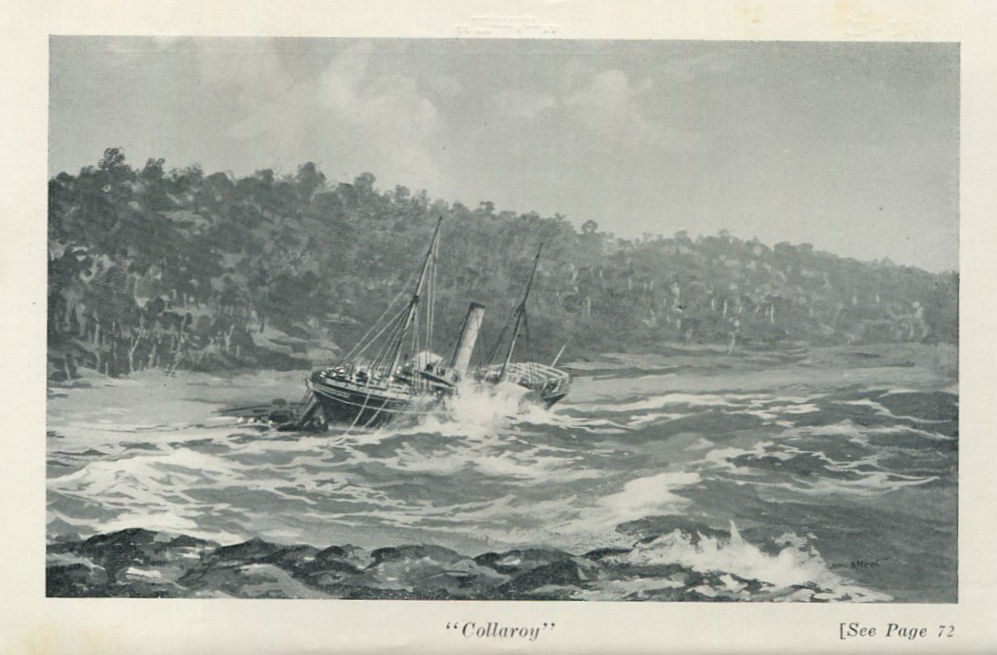
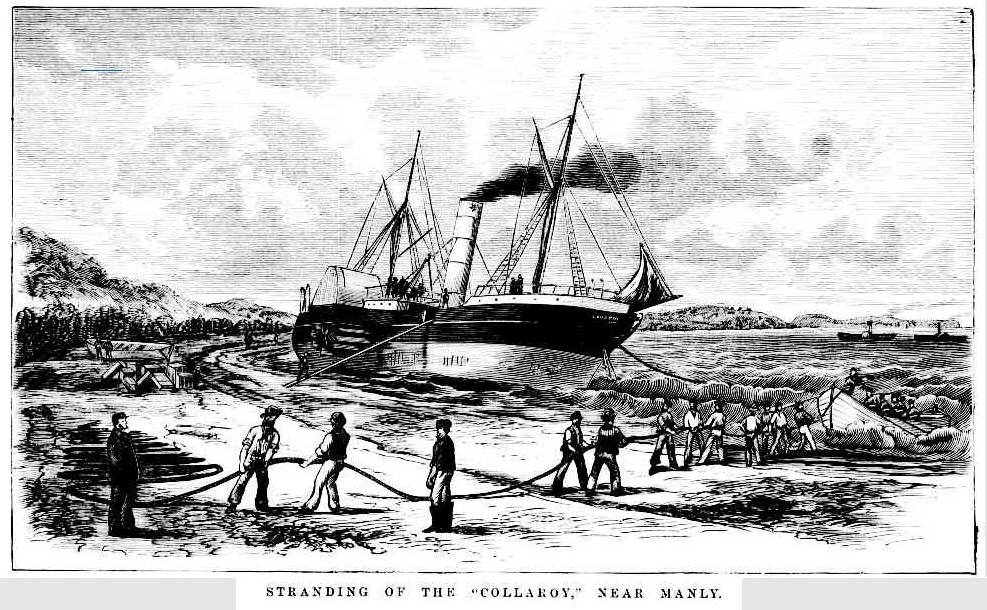
The Steamer Collaroy. ANOTHER ATTEMPT TO FLOAT HER.
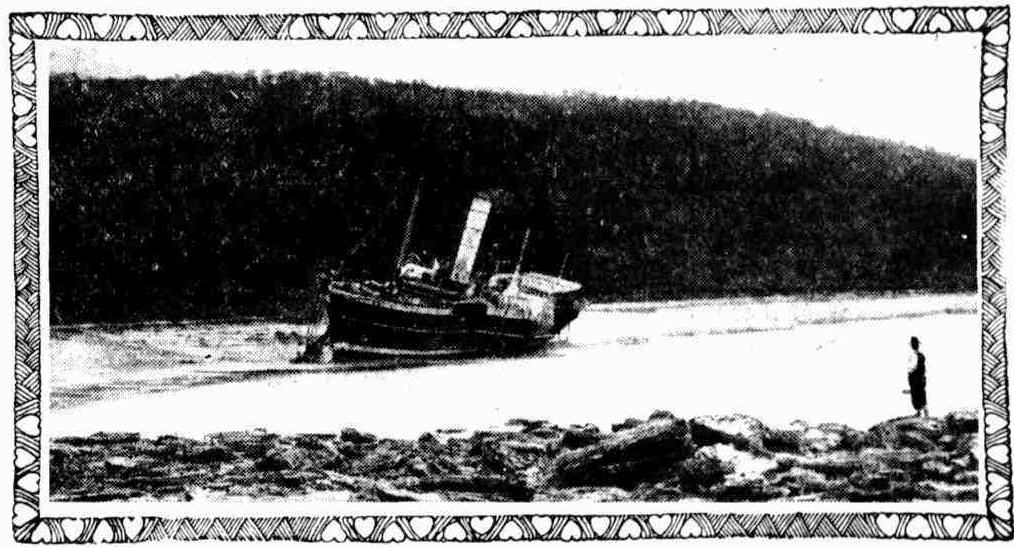
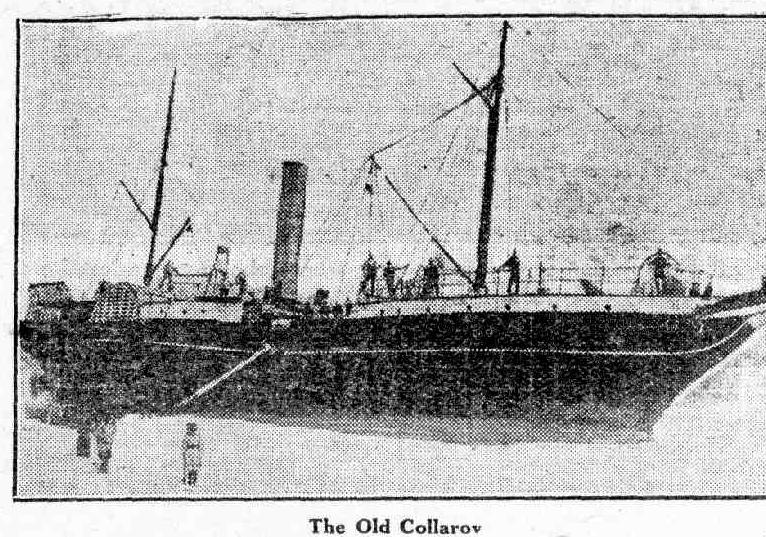
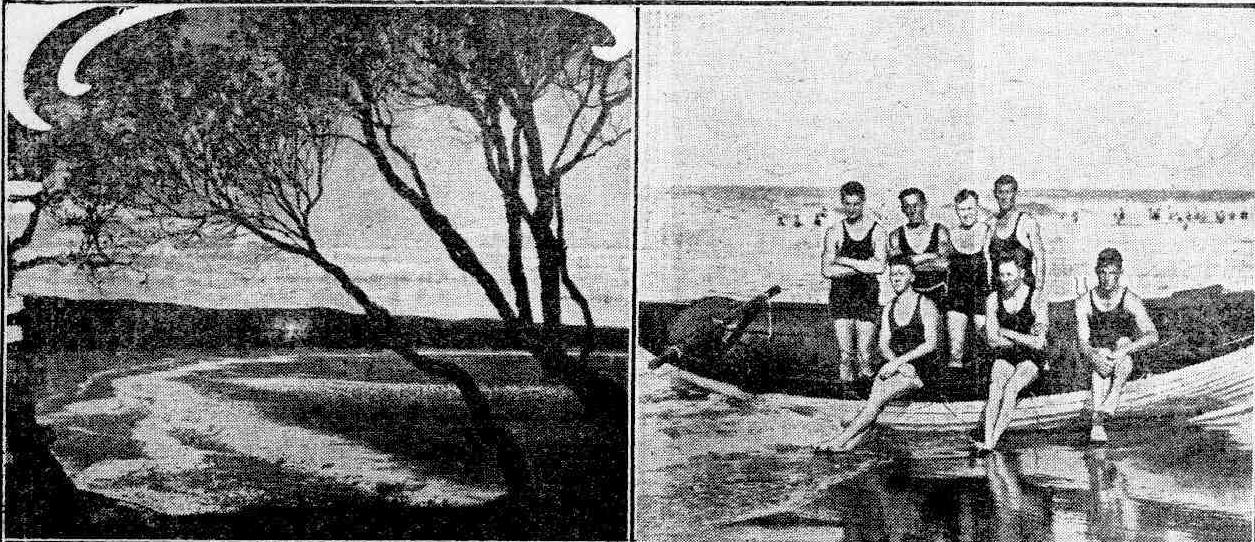
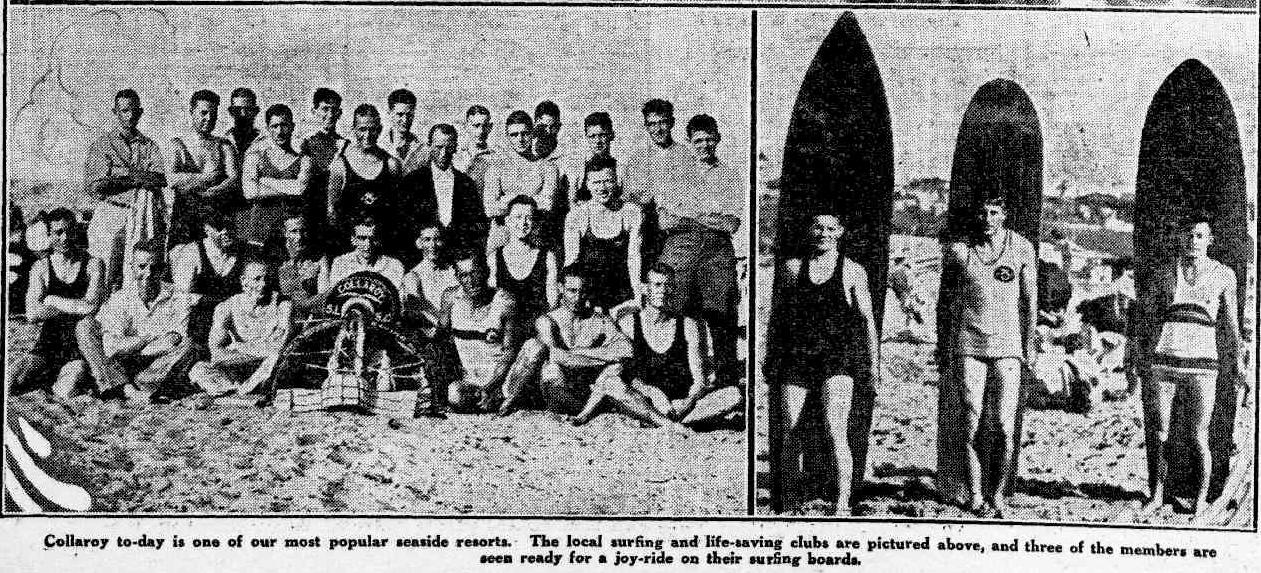
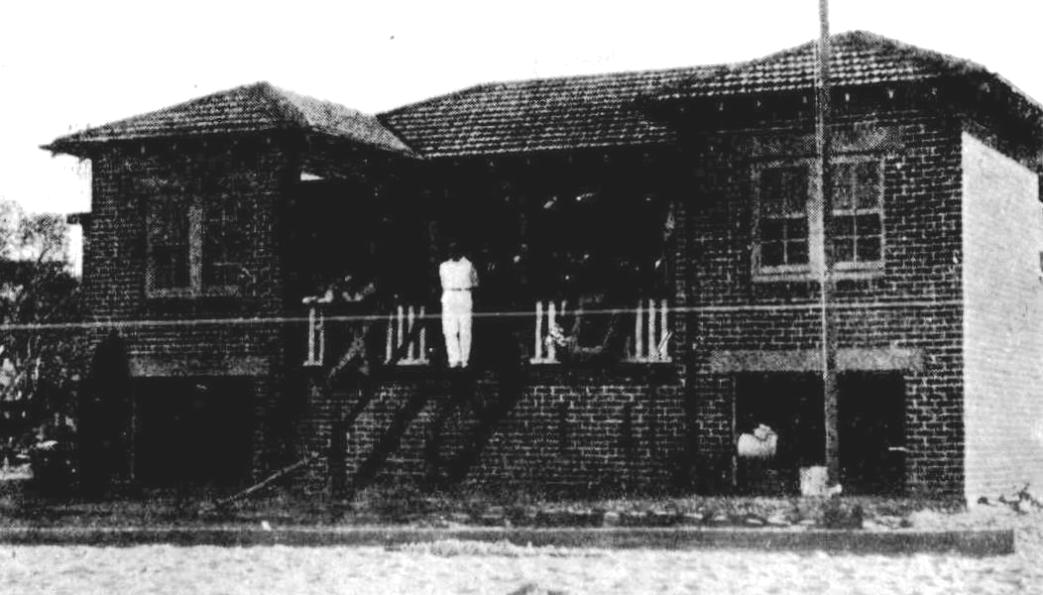
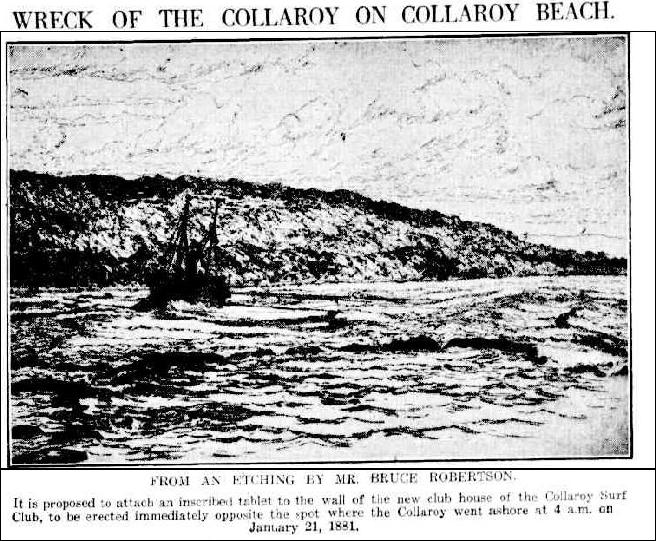
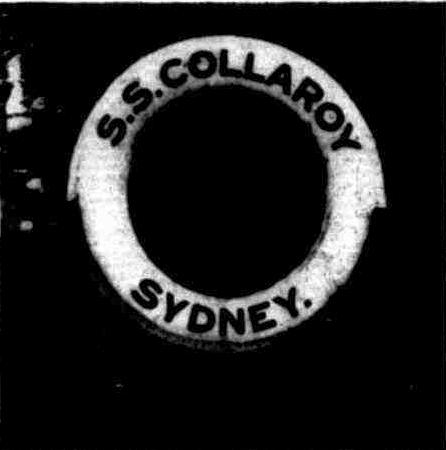
MARINE BOARD ENQUIRIES.
The Marine Board sat yesterday afternoon. Captain Hixson presided, and there were also present,-Captains Broomfield, Jenkins, M'Lean, and Moodie.
Charles Matherson, master of the Rose of Sharon, was summoned to show cause why his certificate should not be suspended. He was represented by Mr. F. P. Wilkinson. The vessel, which was a coasting steamer of 78 tons, owned by W. Hudson, was wrecked off Long Reef on February 28.The President said that the Board wished Captain Matherson to answer two points, that of carelessly navigating the vessel, and that of leaving the deck without any competent person in charge. Mr. Wilkinson said that the vessel was a small coasting steamer;under the 81st section of the Navigation Act it was provided that vessels under 100 tons should carry a master and a second engineer; they were not obliged to carry a mate; it could not be expected that Captain Matherson should stay on deck the whole day and night himself ;he had been on duty from 6 o'clock in the morning until 1 o'clock tho next morning, and was then under the necessity of taking rest ; he left the vessel in charge of a sea-man named Donald M'Gregor; this man had been with him for two years, and had always previously been found to be trustworthy; he knew how to steer, and had the course given to him; had it been followed everything would have been safe; but it was not followed, and M'Gregor was the person who was to blame, and not the captain; had there been a mate on board, and had the accident happened during his watch, the captain would not have been to blame; if the board held that the capatin was wrong, then the Act was wrong, because he had fully carried out the law; he did not see how the board could possibly find him guilty, although they might suggest some alteration in the law if they thought desirable; had Captain Matherson not given M'Gregor the course he would have been in the wrong, but the fault was, having had the course given to him, the man did not keep it, but allowed the ship to go astray; although the vessel did go on shore no lives were lost; there was some damage done, but not as much as generally occurred on these occasions, and this was probably owing to the great exertions made by the captain afterwards ; the owner was present and was williug to be examined as to Captain Matherson's character. The President remarked that they had seen Captain Matherson's testimonials, and also knew that his character stood high as a seaman.
Mr. Wilkinson said that under these circumstances it would not be necessary to give any further evidence.The President said that the board could not altogether acknowledge the right claimed by counsel in the matter.He wished it to appear that because a captain had not got a certificated man on the ship, that therefore he could leave any person, competent or incompetent, in charge. But that would never do. A captain's responsibility on his ship never lapsed. It would be a pretty state of things if it did.
Taking into consideration Captain Matherson's able testimonials, and recognising that there was no loss of life and very little damage, due to a great extent to his efforts, they would not deal with his certificate, but would severely reprimand him, and caution him to be careful as to his conduct in future.
The Board then held an enquiry into the loss of the schooner Energy, on the Clarence River, on the 29th February. S. R. Savory said that he was master of the Energy before she was wrecked; he held a certificate of service in New Zealand ; she was a three-masted schooner of 185 tons, and of Australian build; he owned a third of the vessel, and C. B. Stone and W. H. Brown were also interested in her; both these gentlemen were insured, but this trip he was not; the vessel had become a total wreck ; he was on voyage from Melbourne to the Clarence ; there were nine seamen, all told, and no passengers : he arrived off the Clarence bar on the evening of the 27th ; bad weather set in, and he had to go to sea; the weather moderated, and he was making his way back to the Clarence; the bearings he took gave him a position of five miles off Evan's Head; there was a four-knot breeze on, with a little swell from the southward; he found they were getting nearer shore than he liked, and tried to turn the ship, but she would not come round, and drifted on to the land ; she missed stays twice ;he had been master of her over four years ; she was properly trimmed and ballasted, and had always turned well before; the Clarence light was in sight all the time; there was a heavy current running, and it was this that drifted the ship on to the shore' F. Hughes said he was mate of the Energy when she was lost; it was his watch below; the captain called him on deck to let go the anchor; he did so in from eight to ten minutes before she struck; she dragged the anchor; everything possible was done to try and save the vessel. R. Smith, who was acting as second mate, attributed the accident to the ship missing stays twice and the wind falling light. James Webb, able seaman, gave corroborative evidence. The board announced that they found that the Energy was lost through of missing stays twice and consequent dragging, but there was no evidence upon which to found a charge of default against the Master. MARINE BOARD ENQUIRIES. (1887, April 6). The Sydney Morning Herald (NSW : 1842 - 1954), p. 11. Retrieved from http://nla.gov.au/nla.news-article13648697
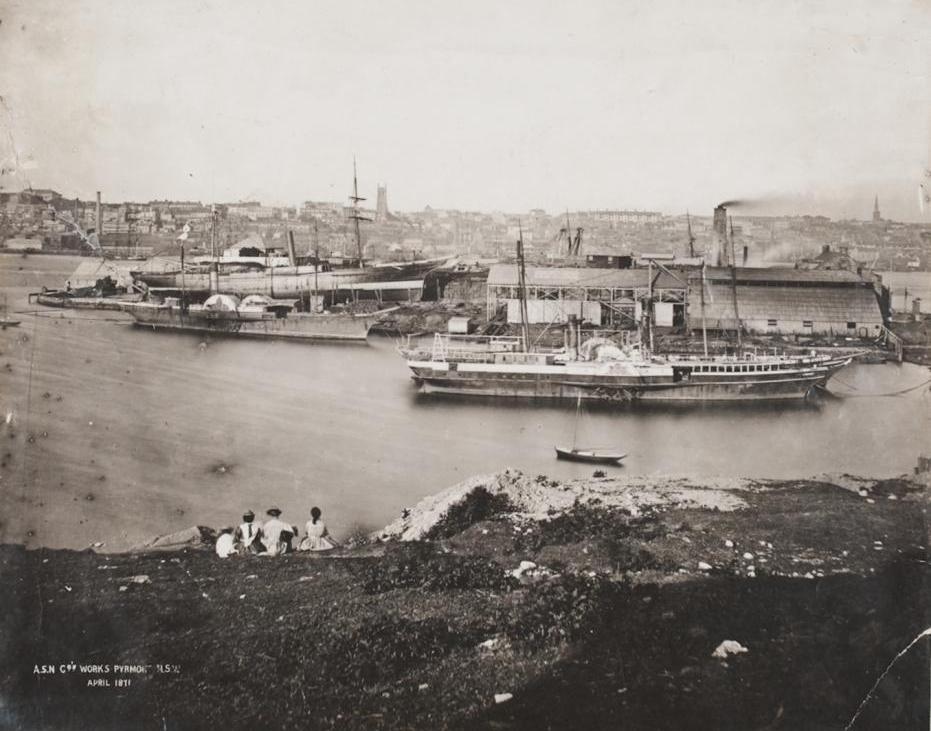
Above - same as 1903 article ASN Darling Island. Image No.: a5621001h, courtesy State Library of NSW.
